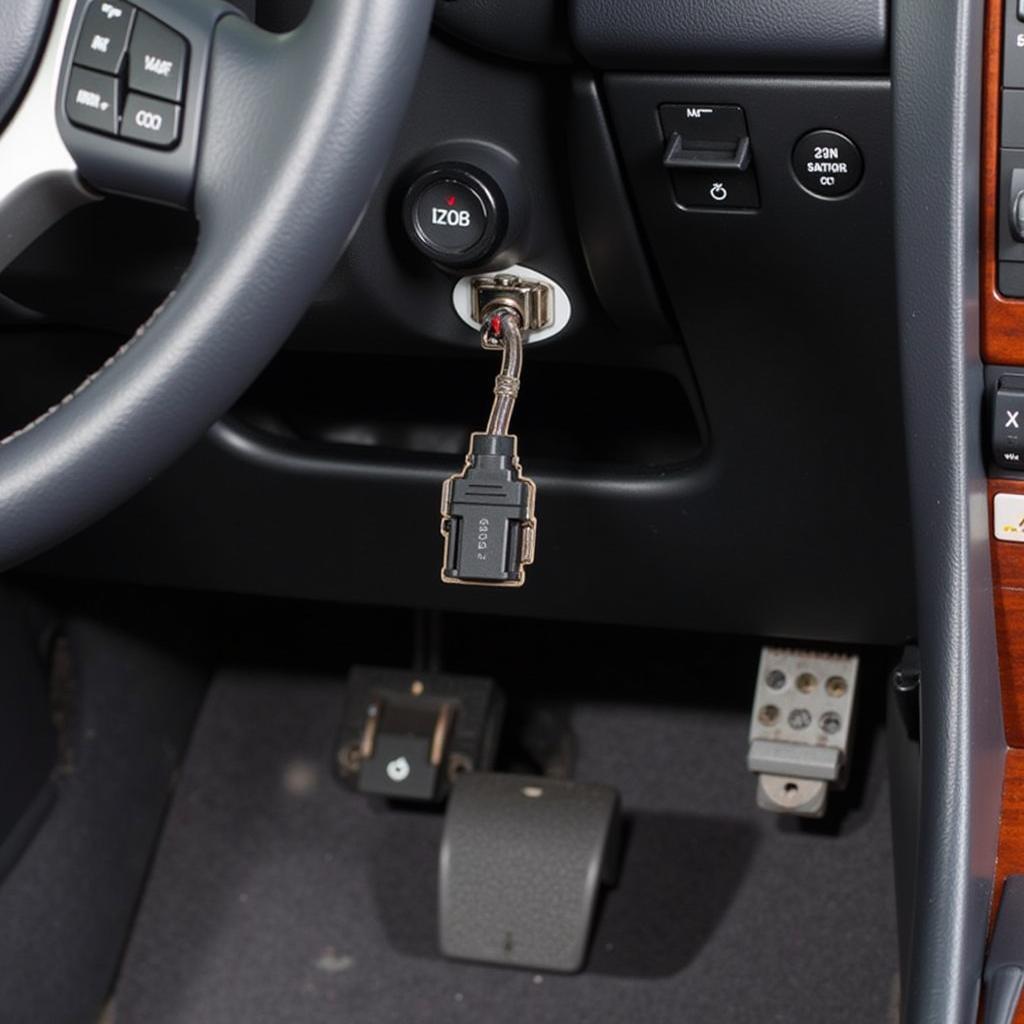The OBD2 port, or On-Board Diagnostics port, is a crucial component in your Lexus IS300. It acts as the gateway to your car’s computer system, allowing you to diagnose issues and understand your vehicle’s health in detail. Whether you’re a seasoned mechanic or a car enthusiast, knowing where to find this port and how to use it is essential.
Why is the OBD2 Port Important?
Your IS300’s OBD2 port is the key to unlocking a wealth of information about your car’s performance. By connecting an OBD2 scanner, you can:
- Identify and diagnose engine problems: The port allows you to read diagnostic trouble codes (DTCs) stored in your car’s computer, pinpointing the source of engine issues, such as misfires, sensor failures, or emissions problems.
- Monitor real-time data: Observe live data streams from various sensors, including engine speed, coolant temperature, oxygen sensor readings, and more. This allows for monitoring performance and identifying potential problems early on.
- Reset warning lights: After addressing a problem, you can use an OBD2 scanner to reset the check engine light and other warning lights on your dashboard.
- Customize your driving experience: Some advanced scanners offer features to adjust certain vehicle settings, such as shift points, throttle response, and more.
Locating the OBD2 Port in Your Lexus IS300
In most Lexus IS300 models, the OBD2 port is conveniently located under the driver’s side dashboard, typically near the steering column or the fuse box.
Here’s a step-by-step guide to help you find it:
- Sit in the driver’s seat and locate the area beneath the steering wheel.
- Visually inspect the area for a rectangular, trapezoidal-shaped port. It’s typically black in color and may have a protective cover.
- The port may be labeled “OBD2” or “DLC” (Data Link Connector). If you don’t see it immediately, try feeling around the area as it might be recessed or partially hidden by a panel.
Note: The exact location may vary slightly depending on the model year of your IS300. If you’re having trouble finding it, consult your owner’s manual.
What to Do After Finding the OBD2 Port
Once you’ve located the OBD2 port, you can connect a compatible OBD2 scanner. Here are a few things you can do:
- Read and clear diagnostic trouble codes: Identify and understand the meaning of any stored DTCs, then clear them after addressing the underlying issue.
- Monitor live data: Observe real-time sensor readings to diagnose problems or simply learn more about how your engine is performing.
- Perform specific tests: Some scanners enable component testing or system-specific diagnostics.
Important: When choosing an OBD2 scanner, ensure it’s compatible with your Lexus IS300 model year and supports the features you need.
Common Issues and Troubleshooting
Can’t find the OBD2 port? Double-check your owner’s manual for the precise location in your specific model year. Consider using a flashlight to illuminate the area under the dashboard.
Scanner won’t connect? Ensure the scanner is compatible with your IS300 and that the ignition is turned to the “on” position. Check the connector for any bent or damaged pins.
Trouble understanding codes? Refer to a reliable OBD2 code database or consult a qualified mechanic for assistance.
Conclusion
The OBD2 port in your Lexus IS300 is a powerful tool for understanding your vehicle’s health and diagnosing potential problems. By following the steps outlined in this guide, you can easily locate the port and begin utilizing its capabilities.
For further assistance with your Lexus IS300 or to explore our range of OBD2 scanners, contact our expert team via WhatsApp: +1(641)206-8880, or email us at [email protected]. We offer 24/7 customer support to help you get the most out of your vehicle.


